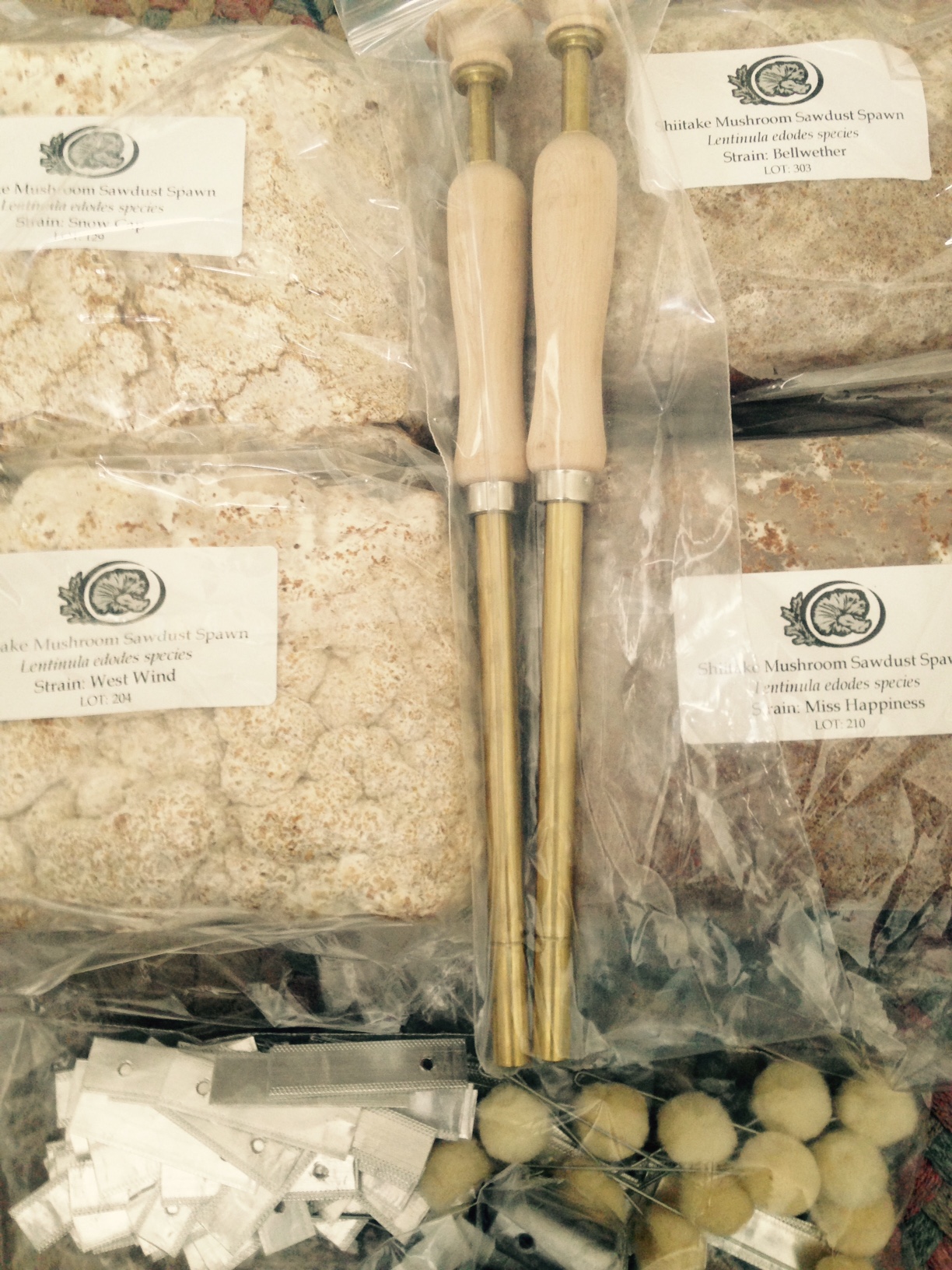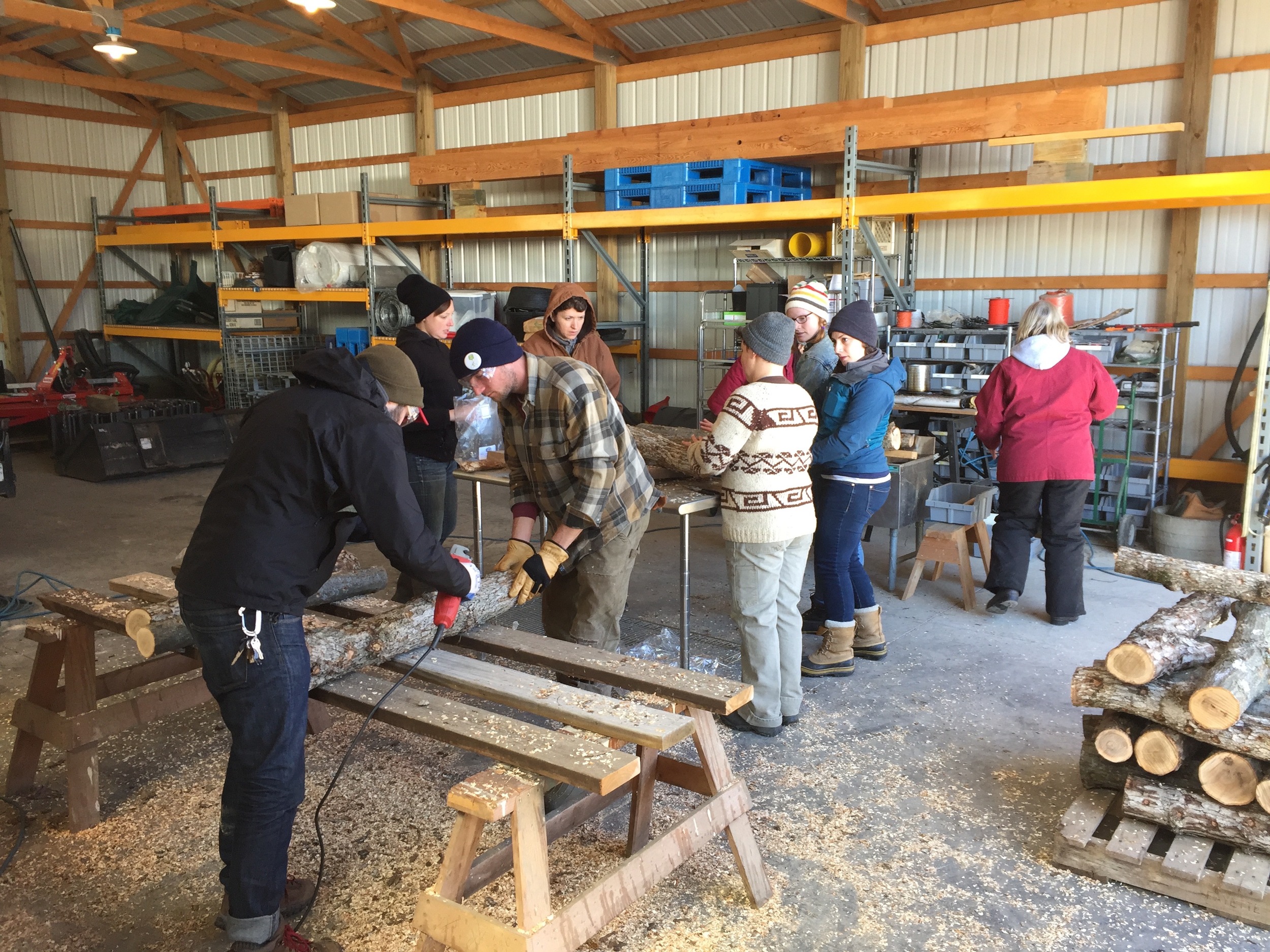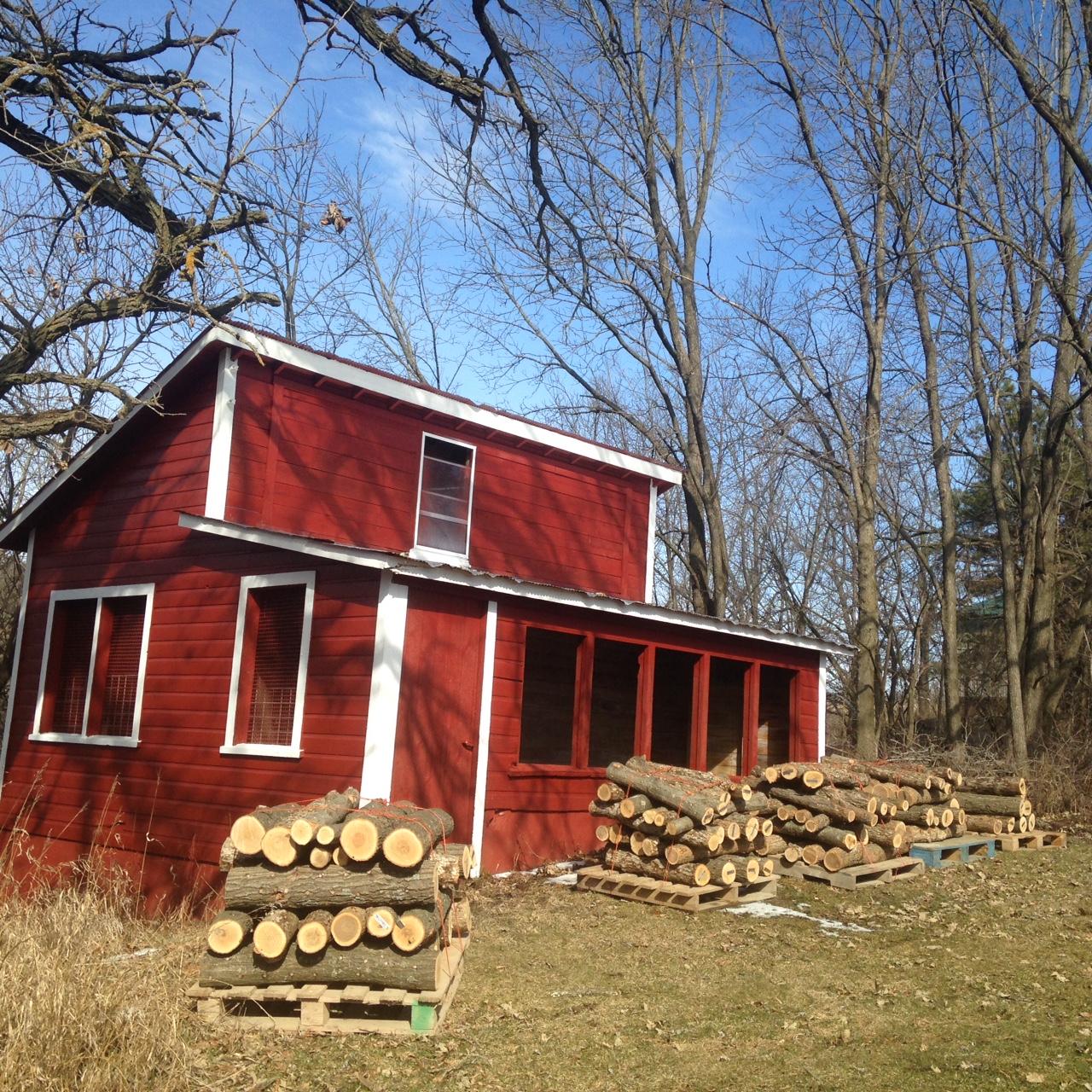This past weekend, I hosted the first (of many?) work parties on the farm. There are some projects that really benefit from an assembly line, and inoculating mushroom logs is definitely one of them. So when it came time to tackle this year’s round of 100 shiitake logs, I thought I better come up with some kind of crew to make the whole thing go a lot faster. I didn’t exactly think it would be pulling teeth, but I was pleasantly surprised by how many people were totally up for putting in a full day of work. I mentioned it to a few people at MOSES, and the response was overwhelming. In fact, I was waffling a bit on starting the mushrooms at all this year, daunted but the prospect of first finding and cutting the logs and then going through the whole inoculation process, not to mention ordering the spawn and investing in the necessary tools. It was the excitement of the free labor force that pushed me to actually go through with my plans - and thank goodness! The whole thing went off without a hitch, and with a great crew! Besides me, Aunt Mary, and Uncle Paul, we had 10 other people rotate through the assembly line throughout the day! Nobody else had ever done mushroom logs before, so we started out at a pretty deliberate pace, but everyone got the hang of it before too long, and after lunch we were fairly flying! The mix of MOSES conference friends/acquaintences and new neighbors made for interesting conversation, and the weather and the food both cooperated for a lovely day! Everybody left with a log or two of their own, and every single one of them can’t wait to come back and help with the next big project! I was very glad to hear it, but I don’t know if they quite know what they’re signing up for!!



























